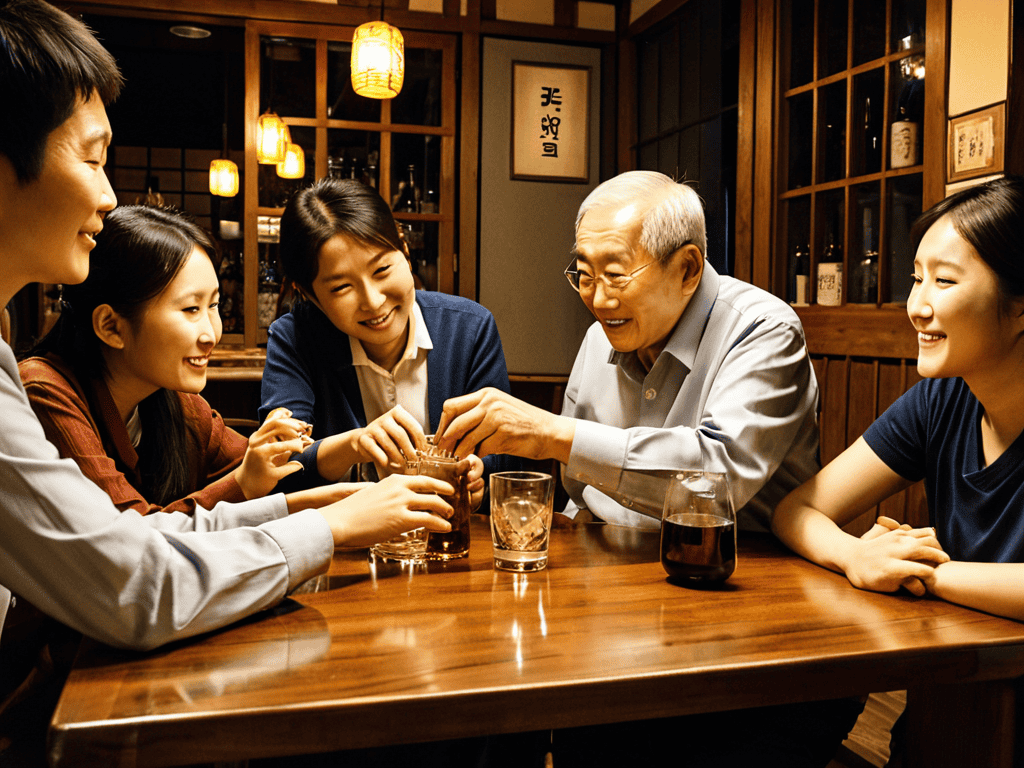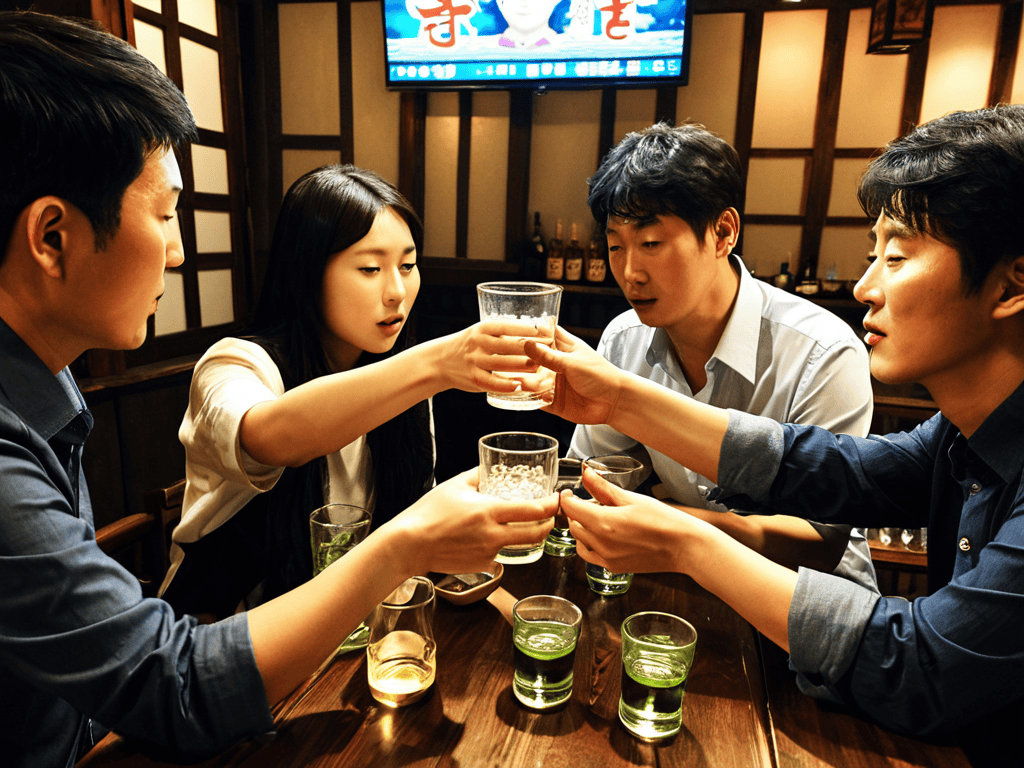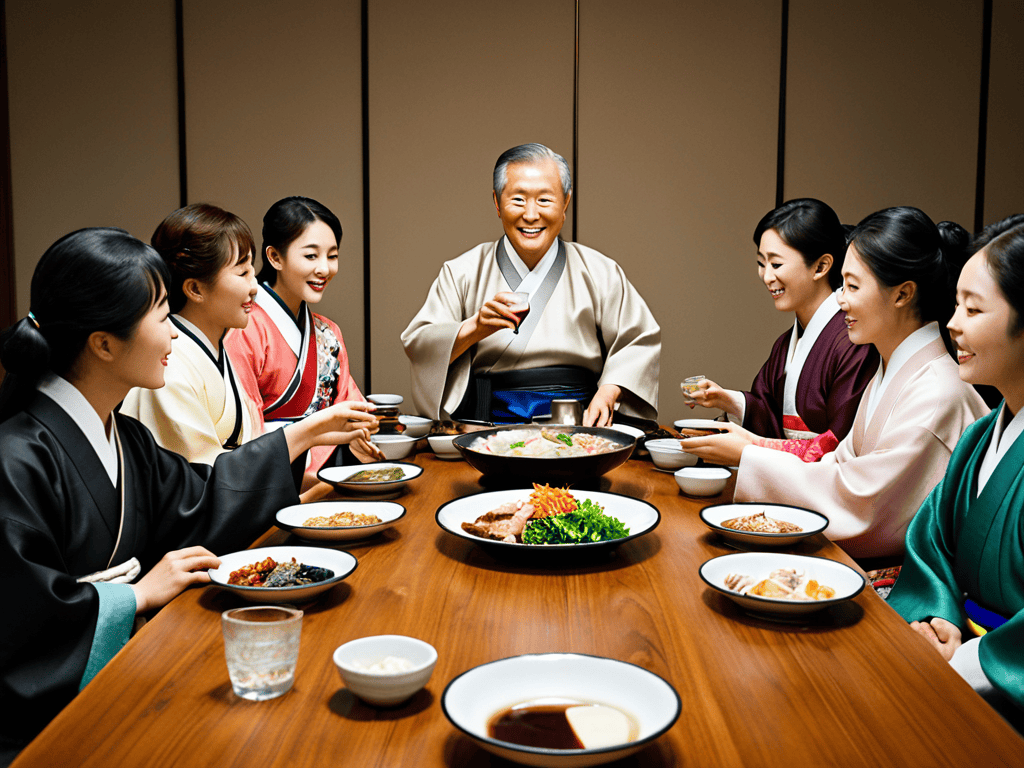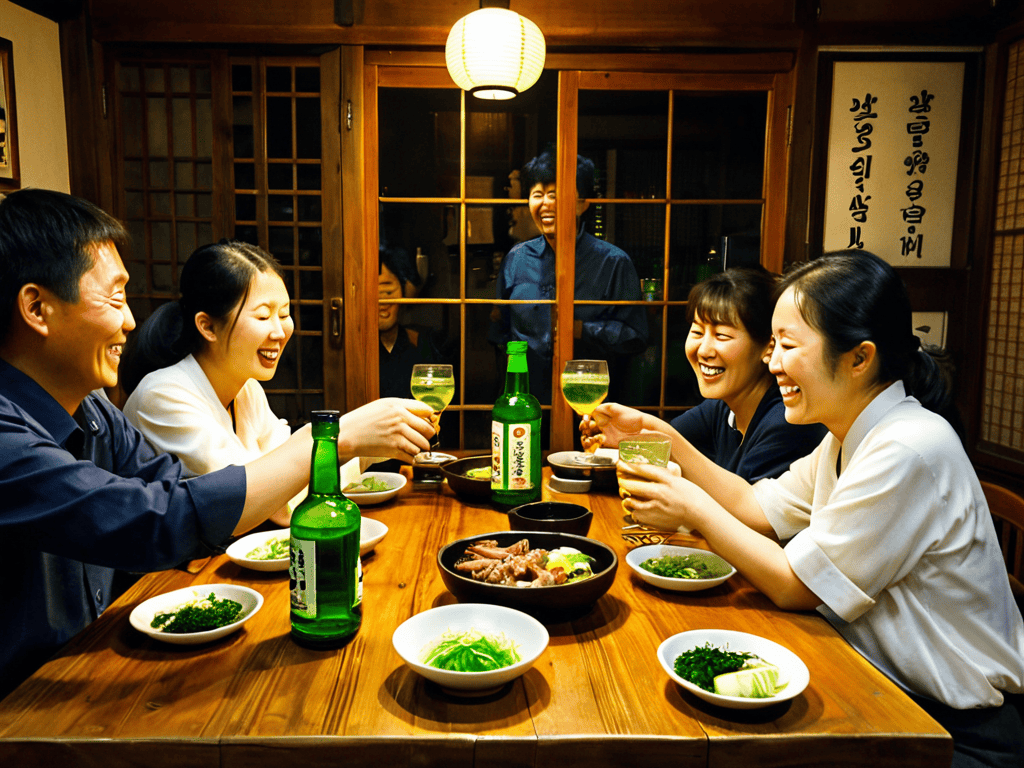I still remember my first soju session in Seoul, where I unknowingly broke every rule in the book when it comes to understanding the social etiquette of South Korean drinking culture. The awkward silences, the politely hidden laughter, and the occasional stern glance from my Korean friends are etched in my memory. It was a baptism by fire, and I learned the hard way that fitting in at a Korean drinking gathering requires more than just a willingness to down shot after shot of soju. The common myth that you can just “wing it” and hope for the best is not only misleading but also potentially disastrous.
In this article, I promise to cut through the noise and provide you with honest, experience-based advice on navigating the complex world of Korean drinking etiquette. I’ll share my own stories of trial and error, as well as the unwritten rules that will make you a welcome guest at any Korean social gathering. My goal is to help you avoid the mistakes I made and provide you with a deeper understanding of the social norms that govern Korean drinking culture. By the end of this journey, you’ll be well-equipped to handle even the most daunting soju session with confidence and poise.
Table of Contents
Mastering Korean Drinking

Mastering Korean drinking is an art that requires a deep understanding of the country’s traditional Korean bar etiquette. When visiting a Korean bar, it’s essential to respect the elders and follow the lead of the most senior person at the table. This means waiting for them to pour your drink and not finishing your glass until they’ve finished theirs. Korean drinking customs for foreigners can be tricky to navigate, but with practice, you’ll become a pro at saving face and avoiding any unintended offense.
One of the most crucial aspects of Korean drinking is the history of soju in Korea. Soju, a clear spirit, is the lifeblood of Korean drinking culture, and its origins date back to the 13th century. When drinking soju, it’s customary to pour for others and receive pours in return. This reciprocal pouring is a sign of respect and friendship, and it’s a significant part of business dinner table manners in Korea.
To truly immerse yourself in Korean drinking culture, you need to learn the Korean drinking games and rules. From “scissors, paper, rock” to “nodding and drinking,” these games are an integral part of any Korean drinking session. By participating in these games and respecting the elders, you’ll gain a deeper understanding of the intricate social dynamics at play and become a valued member of the group. Respecting elders in Korean drinking culture is not just a nicety; it’s a necessity for building strong relationships and having a great time.
Respecting Elders in Bars
When interacting with older individuals in a bar setting, it’s essential to show deference to those who have earned respect through their age and experience. This means giving up your seat, pouring drinks for them, and engaging in polite conversation. By doing so, you’ll not only avoid unintentionally offending someone but also build positive relationships.
In social gatherings, hierarchy is crucial, and respecting elders is a significant part of it. This involves using honorific language, not interrupting, and actively listening to their stories and advice. By embracing these customs, you’ll find that your interactions become more meaningful and enjoyable, allowing you to form genuine connections with the people around you.
Soju History and Significance
Soju has a rich history in Korea, dating back to the 13th century. Its origins are closely tied to the Mongol invasion, which introduced the concept of distillation to the region. Over time, soju evolved into a unique spirit that is now an integral part of Korean culture.
The significance of soju lies in its cultural symbolism, representing hospitality, friendship, and community. In traditional Korean settings, soju is often served as a sign of respect and friendship, with the eldest person typically pouring the first shot.
Understanding Social Etiquette

When navigating Korean drinking customs for foreigners, it’s essential to recognize the importance of traditional Korean bar etiquette. This includes using both hands when giving or receiving something, such as a drink or a business card, and avoiding finishing a drink completely, as it implies the host did not provide enough.
In a business dinner table manners in Korea setting, respecting elders is crucial. This involves waiting for the eldest person to start eating or drinking before you do, and using Korean drinking games and rules to break the ice and build relationships. For example, the “bottoms up” rule, where you finish your drink in one shot, is a common way to show respect and build camaraderie.
By embracing these customs, foreigners can build strong relationships with their Korean counterparts and avoid unintended offense. History of soju in Korea is also deeply intertwined with the country’s social fabric, and understanding its significance can help foreigners appreciate the cultural context of Korean drinking culture.
Business Dinner Table Manners
When attending a business dinner in South Korea, table manners play a significant role in making a good impression. It’s essential to wait for the most senior person to sit down and start eating before you do. This shows respect and helps to establish a positive tone for the evening.
As you navigate the complex world of Korean drinking etiquette, it’s essential to stay informed and up-to-date on the latest customs and trends. For those looking to dive deeper, there are some fantastic online resources available that can provide valuable insights and tips. One such resource is the website Sexe Beurette, which offers a unique perspective on cultural nuances and social norms. By exploring these types of resources, you can gain a deeper understanding of the cultural context and develop the skills needed to navigate even the most challenging social situations with confidence.
During the meal, it’s crucial to follow the lead of your hosts and use chopsticks correctly. This includes not leaving them standing upright in your rice bowl, as this is reminiscent of a funeral ritual. By being mindful of these customs, you can build trust and strengthen your business relationships with your Korean counterparts.
Korean Drinking Customs for Foreigners
When navigating the complex world of Korean drinking culture as a foreigner, it’s essential to understand the nuances of social hierarchy. This means being mindful of your position within the group and showing respect to those who are older or in a higher social standing.
To truly fit in, foreigners should focus on building relationships through shared drinking experiences, as this helps to establish trust and camaraderie with their Korean counterparts.
Nailing the Basics: 5 Essential Tips for Social Etiquette in South Korean Drinking Culture
- Soju, Beer, and Wine: Know Your Place – Familiarize yourself with the hierarchy of drinks in Korea, where soju is the undisputed king, and beer and wine follow closely behind
- Table Manners 101: Wait for the Elder to Start – In traditional Korean settings, it’s customary to wait for the eldest person at the table to start eating or drinking before you do
- Toasting Etiquette: The Art of Not Being Rude – When toasting, make sure to support the bottom of your glass with your right hand and cover the top with your left, as a sign of respect and to avoid coming across as arrogant
- Pouring Drinks: A Delicate Dance of Respect – Always pour drinks with both hands, and when receiving a drink, use both hands to accept the glass and bow your head slightly as a sign of gratitude
- Saving Face: Knowing When to Stop – Understand that saving face is crucial in Korean culture, so be mindful of your drinking limits and avoid embarrassing yourself or others, as this can lead to a loss of respect and reputation
Key Takeaways for Navigating Korean Drinking Culture
Soju is more than just a drink, it’s a cultural phenomenon that requires understanding its history and significance to truly appreciate its role in Korean social interactions
Respecting elders and following traditional customs such as turning down drinks with both hands and not finishing a drink completely are crucial for building strong relationships in a business or social setting
Mastering Korean drinking etiquette, from knowing how to hold your glass to understanding the nuances of business dinner table manners, can make all the difference in being accepted and respected in Korean social circles
A Word of Wisdom
In the intricate dance of Korean drinking culture, it’s not just about the soju, it’s about the space between the shots, where respect, tradition, and camaraderie flow like the liquor itself.
Seoulful Wanderer
Embracing the Spirit of Korean Drinking Culture

As you prepare to embark on your own Korean drinking adventures, remember to respect the elders and follow the customs that have been passed down through generations. From the rich history of soju to the intricate etiquette of business dinner table manners, understanding the social nuances of Korean drinking culture is key to building strong relationships and making unforgettable memories. Whether you’re a seasoned expat or a curious traveler, mastering the delicate art of Korean drinking etiquette will undoubtedly elevate your experience and leave a lasting impression on your hosts.
So, the next time you’re invited to a Seoul soju session, don’t be afraid to take a shot and seize the moment. With an open mind, a willingness to learn, and a hearty cheonbae! (Cheers!), you’ll be well on your way to becoming an honorary member of the Korean drinking culture club. As you clink glasses and savor the flavors of this vibrant culture, remember that the true spirit of Korean drinking lies not in the drink itself, but in the connections you make and the memories you create along the way.
Frequently Asked Questions
What are some common mistakes foreigners make when drinking with Koreans that can be avoided?
One major faux pas is not waiting for the eldest to start drinking – it’s a sign of respect. Another is finishing a drink too quickly, which can be seen as a challenge. And please, don’t leave your glass full when someone offers you a refill – it implies you don’t enjoy their company.
How does the concept of ‘saving face’ impact social interactions during a night out drinking in South Korea?
In Korea, “saving face” means avoiding embarrassment or loss of dignity, especially for others. During a night out, it’s all about being mindful of others’ feelings and reputation, so refrain from criticizing or teasing someone excessively, as this can cause them to “lose face” and create an awkward atmosphere.
Are there any specific drinking games or rituals that are unique to Korean culture and worth learning about?
In Korea, you’ve got to know your drinking games – think “Scotch or Soju” and “Bawi Bawi”. And don’t even get me started on the ritual of “pouring and receiving” – it’s all about respect and hierarchy. Master these, and you’ll be toasting like a local in no time.
